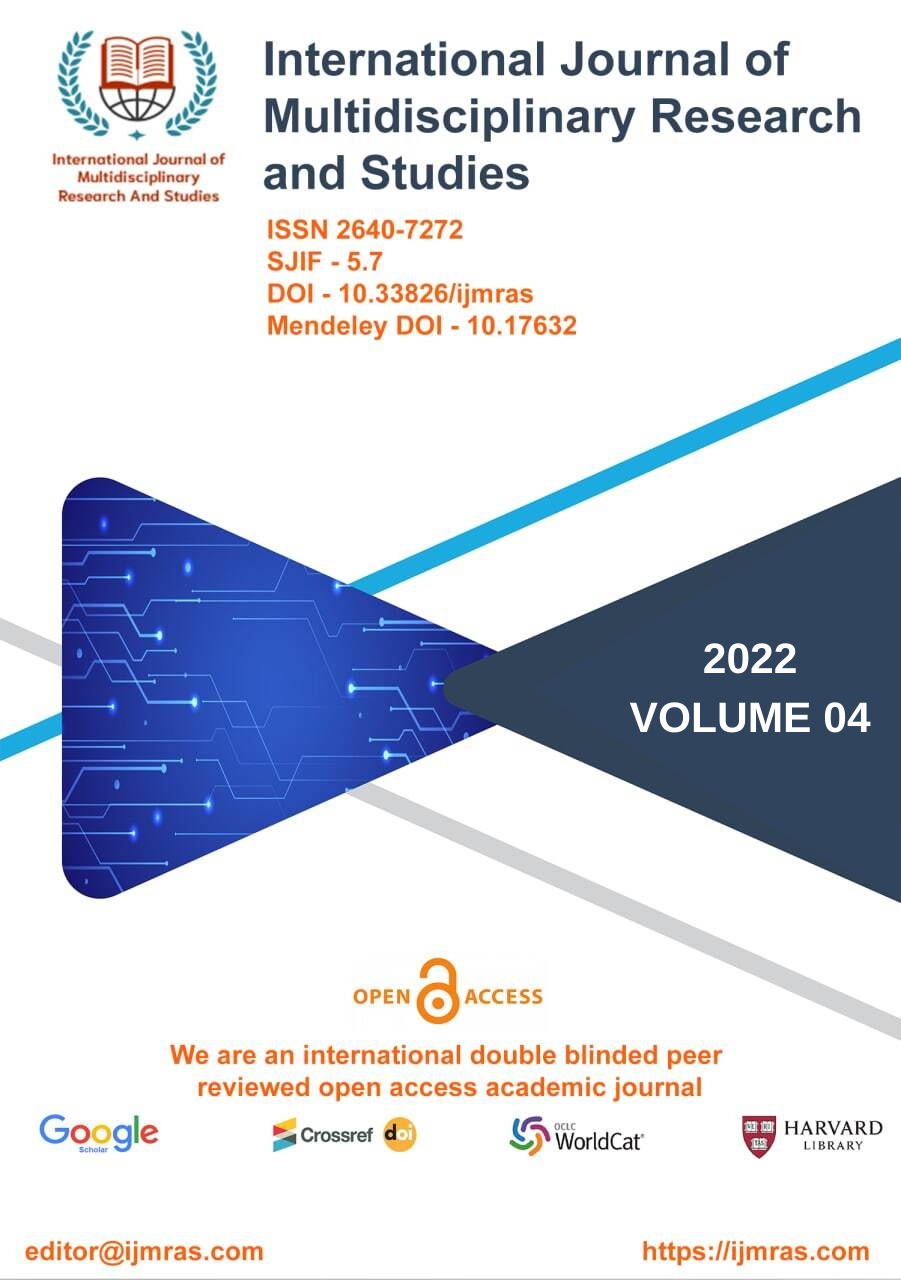LESSONS LEARNED FROM THE 12 STEPS LISTED BY ALCOHOLICS ANONYMOUS REHABILITATION PROGRAM
Abstract
Alcohol, which is available in liquid form, is a drug that is both sedative and intoxicating. In its unaltered form, it may be ignited by heat or flame. It is good in low amounts due to the fact that it activates cells and hormones, but it is dangerous in high levels since it is beyond what the human body is able to digest at one time. In the most severe cases, it may possibly lead to death or a coma. People in every part of the world partake in the use of alcoholic beverages. Alcoholism is a popular form of self-medication and an improvement approach for those who suffer from mental disease and sadness (Gunderson 1997). Between the years 1992 and 2012, India had a tremendous rise of over 55% in the per capita rate of the proportion of people who were alcoholics.
Keywords
Self-Medication, Alcoholism, Hormones, Human BodyHow to Cite
References
Antony, M. M. (2014). Behavior therapy. In D. Wedding & R. J. Corsini (Eds.), Current psychotherapies (10th ed., pp. 193-229). Belmont, CA: Brooks/Cole.
Beck, A. T. & Weishaar, M. E. (2014). Cognitive therapy. In D. Wedding & R. J. Corsini (Eds.), Current psychotherapies (10th ed., pp. 231- 264). Belmont, CA: Brooks/Cole.
Butler Center for Research. (2010). Project MATCH: A study of alcoholism treatment approaches.
Carlson, J., Watts, R. E., & Maniacci, M. (2006). Adlerian therapy: Theory and practice.
Washington, DC: American Psychological Association.
DePue, M. K., Finch, A. J., & Nation, M. (2014). The bottoming-out experience and turning point: A phenomenology of the cognitive shift from drinker to nondrinker. Journal of Addictions and Offender Counseling, 35,
Fall, K. A., Holden, J. M., & Marquis, A. (2004). Theoretical models of counseling and psychotherapy. New York: NY: Brunner-Routledge.
Gomes, K., & Hart, K. E. (2009). Adherence to recovery practices prescribed by Alcoholic Anonymous: Benefits to sustained abstinence and subjective quality of life. Alcoholism Treatment Quarterly, 27,
Gossop, M., Stewart, D., & Marsden, J. (2007). Anonymous meetings, frequency of attendance and substance use outcomes after residential treatment for drug depend- ence: A 5-year follow-up study. Addiction, 103,
Gubi, P. M., & Marsden-Hughes, H. (2013). Exploring the processes involved in long-term recovery from chronic alcohol addiction within an abstinence-based model: Implica- tions for practice. Counselling & Psychotherapy Research, 13,
Johnson, B. D. (2016). Cognitive-behavioral approaches in counseling and psychotherapy. In H. E. A. Tinsley, S. H. Lease, & N. S. Giffin-Wiersma (Eds.), Contemporary theory and practice in counseling and psychotherapy
Kaskutas, L. A., Ammon, L., Delucchi, K., Room, R., Bond, J., & Weisner, C. (2005).
Alcoholics Anonymous careers: Patterns of AA involvement five years after treatment entry. Alcoholism: Clinical and Experimental Research, 29
Kelly, J. F., Greene, M. C., & Bergman, B. G. (2016). Recovery benefits of the “therapeutic alliance” among 12-step mutual-help organization attendees and their sponsors. Drug and Alcohol Dependence, 162,
Kelly, J. F., & Myers, M. G. (2007). Adolescents’ participation in Alcoholics Anonymous and Narcotics Anonymous: Review, implications and future directions. Journal of Psycho- active Drugs, 39,
Klein, A. A., & Slaymaker, V. J. (2011). 12-Step involvement and treatment outcomesamong young women with substance use disorders. Alcoholism Treatment Quarterly, 29,
License
Copyright (c) 2021 Tanu Priya

This work is licensed under a Creative Commons Attribution 4.0 International License.
Individual articles are published Open Access under the Creative Commons Licence: CC-BY 4.0.




